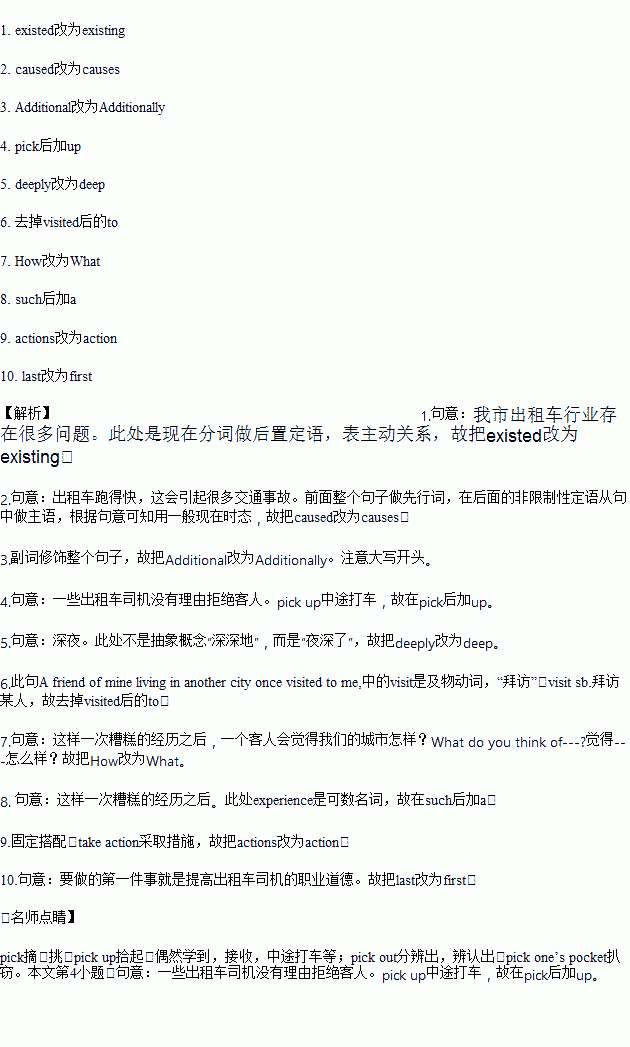题目内容
Dear Mayor,
I'm a resident of the city. I feel there are many problems existed in the trade of taxis in our city. First of all, there aren't enough stops in the streets. And taxis often run very fast, which caused many traffic accidents. Additional, some taxi drivers refuse to pick some passengers without any reason. Another terrible thing is that deeply at night taxis waiting around entertainment places make too much noise. A friend of mine living in another city once visited to me, and she told me a taxi driver once cheated her by taking a roundabout route. How will a guest think of our city after such bad experience? I think we must take actions to tighten control over the taxi trade. The last thing to do is raise the taxi drivers' professional morality.
Sincerely yours
Chris
 名师点拨卷系列答案
名师点拨卷系列答案
